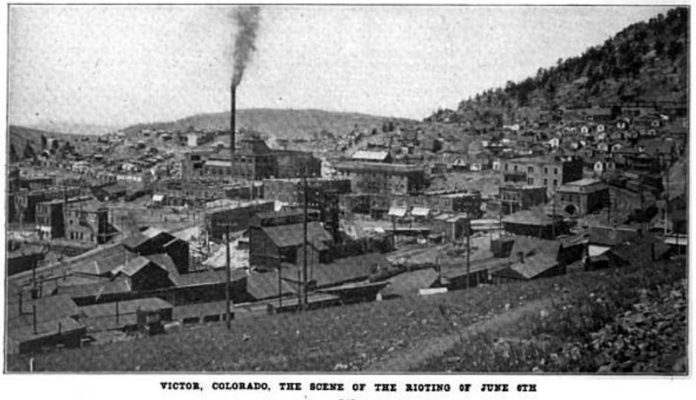

Thirteen miners freshly returned from an illegal exile, sat accused of conspiracy to blow up the Sun and Moon transformer in Idaho Springs in a district courtroom in late January 1904. When the not-guilty verdict came after 46 hours of deliberation, the miners, who had been on strike for nearly a full year, breathed a collective sigh of relief. Thus was the deadly culmination of the Colorado Labor Wars — which resulted in the widespread alteration of labor regulations for miners across the state.
In summer of the previous year, the Sun and Moon mine suffered a deadly explosion to the transformer house. It was surmised that striking union miners had prematurely set off two kegs of dynamite resulting in the death of one of the striking miners, Philip Fire. Prior to this incident, the miners had requested a labor hour limit with no pay reduction and were denied by most mines in the area. When the laborers unionized and went on strike for their cause, several mines agreed and took them back, however, a few larger mines including the Sun and Moon simply contracted non-union miners and reopened without agreeing to meet with the striking union miners.
It was noted in the Biennial Report of the Bureau of Labor Statistics for 1904 that the union had tried to make the case that their members were not “dynamiters and thugs” and that they had real community ties that kept them engaged in local labor issues.
Even with their long-standing community ties, the town was so outraged after the explosion that the men were forcibly expelled from the town before any arrests could be made. Which was “highly illegal” according to district judge Frank Owers, who subsequently issued a bench warrant for the league members responsible for the deportation of the miners according to the 1905 Report on Labor Disturbances in the State of Colorado. Reportedly, District Attorney H.G. Thurman refused to prosecute the league, and instead doubled down on union members that he suspected may have been complicit in the explosion. Then-Gov. Peabody agreed that the men should return and face prosecution.
The men were tried in several courts that overlapped in jurisdiction but eventually, all the men were cleared of the charges in Clear Creek and Gilpin counties. After the not-guilty verdicts were returned for the men, mines across the state reexamined the labor requirements and many began to conform to an eight-hour maximum workday with no reduction in payscale.

